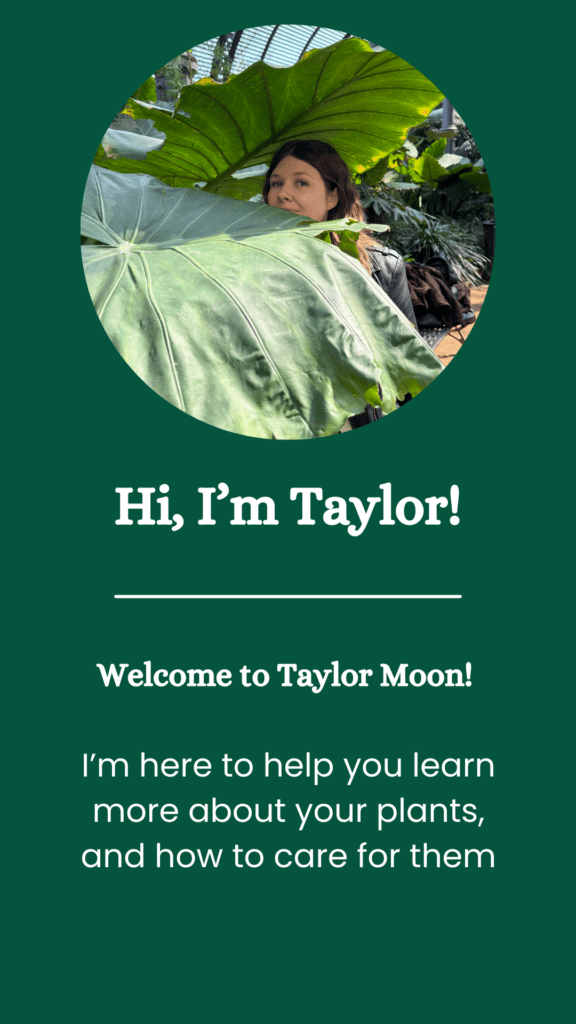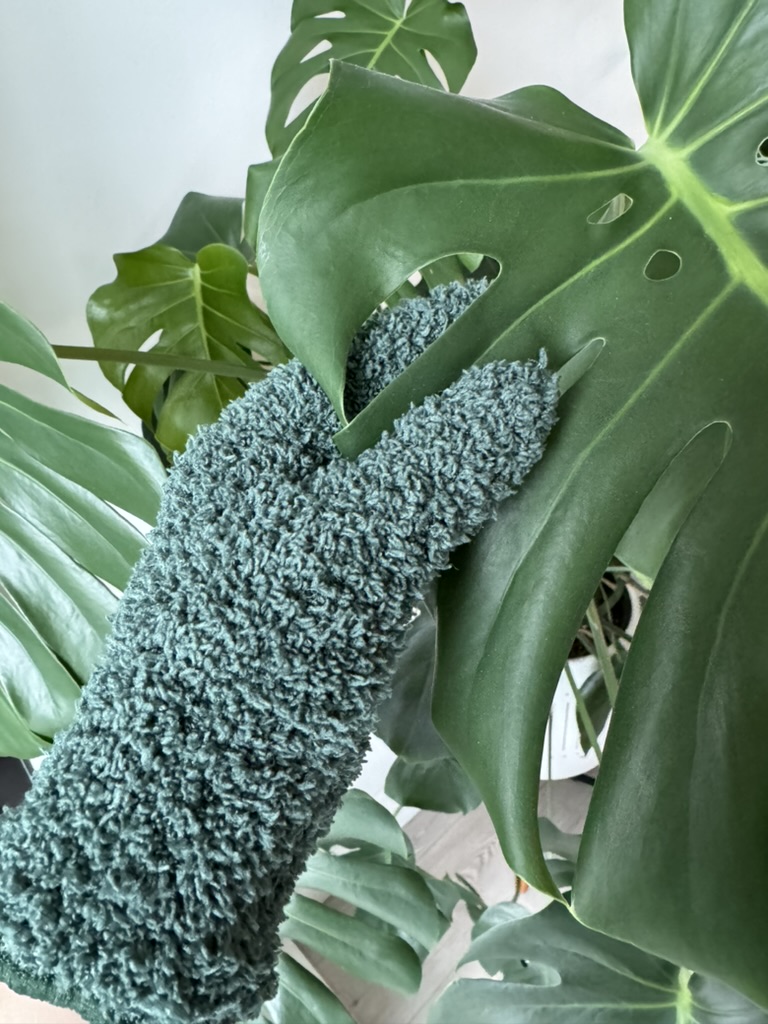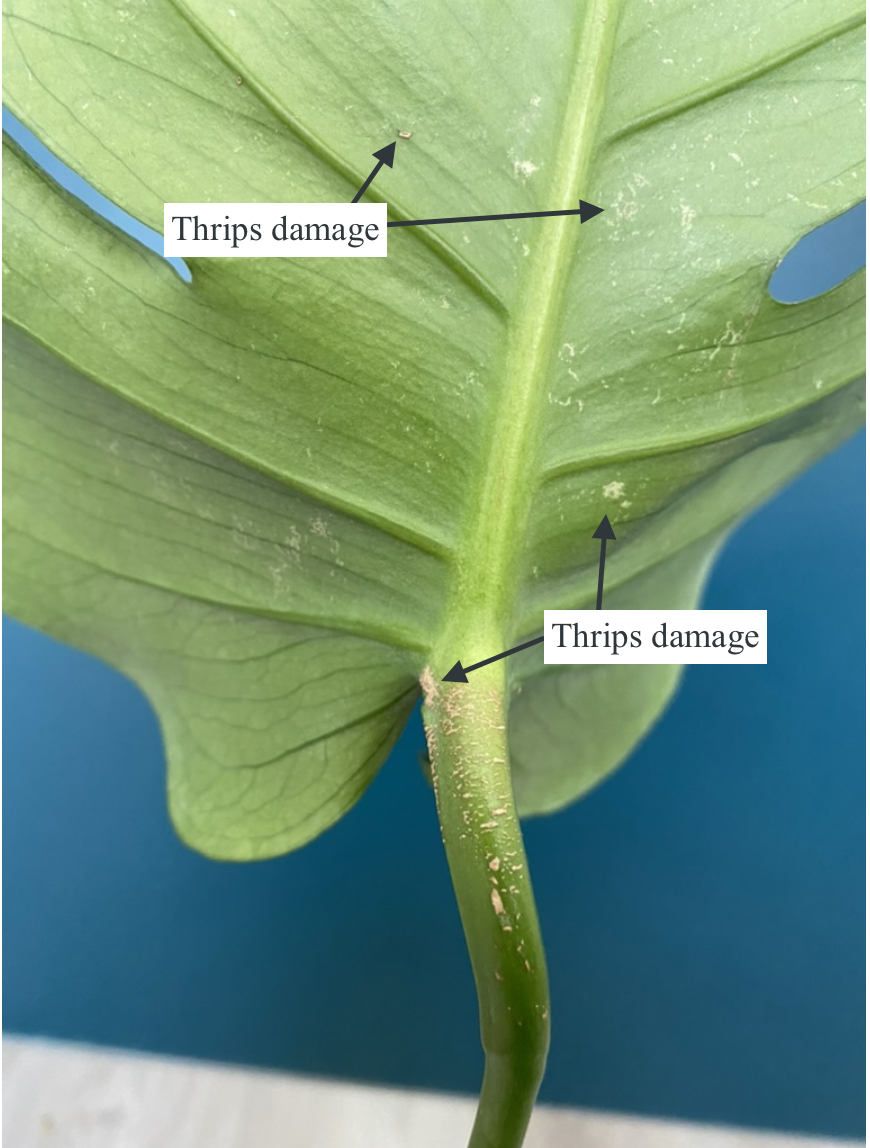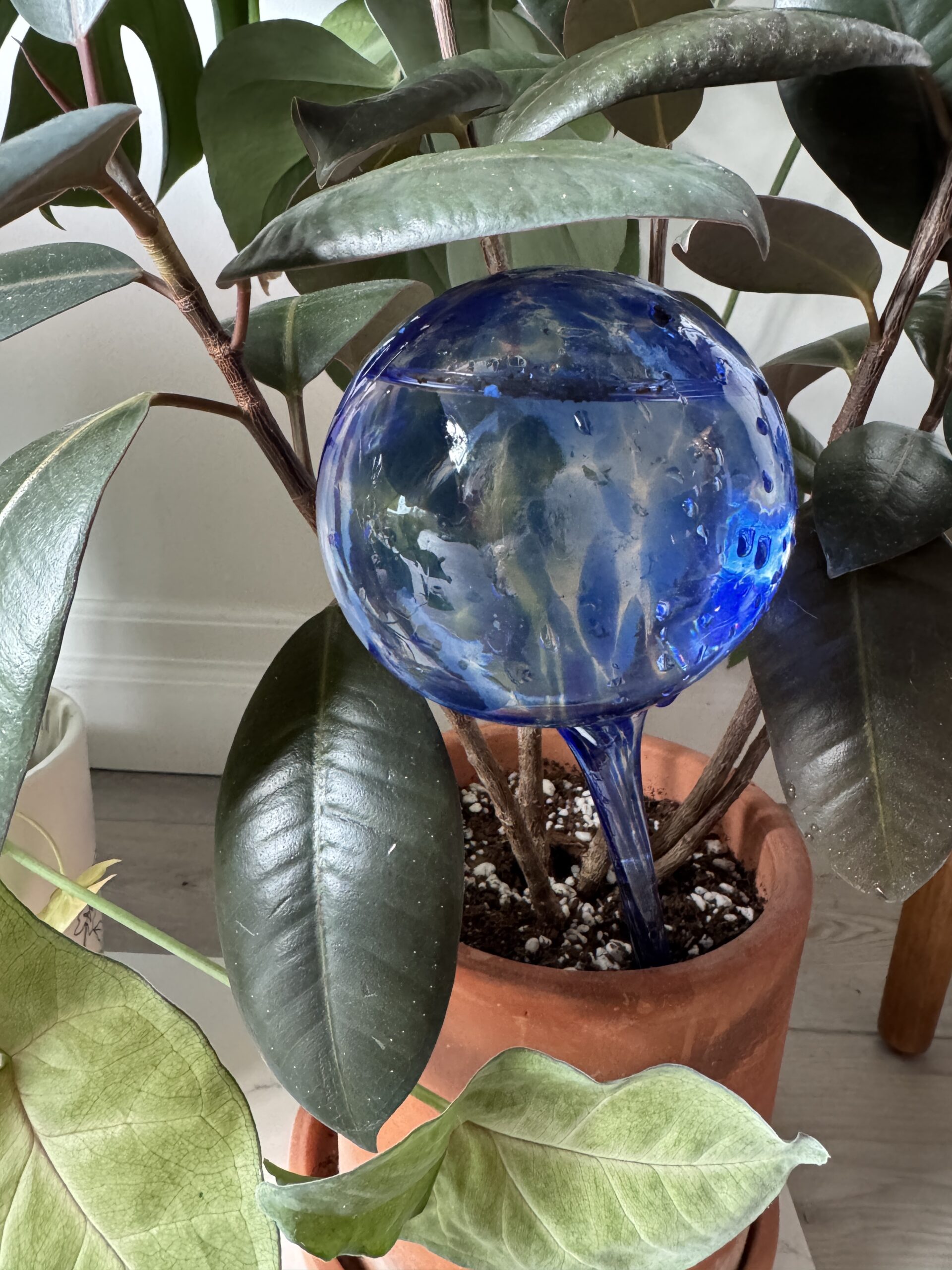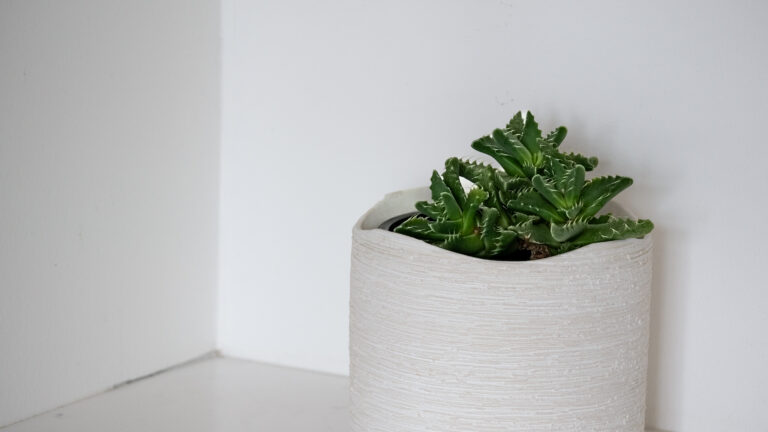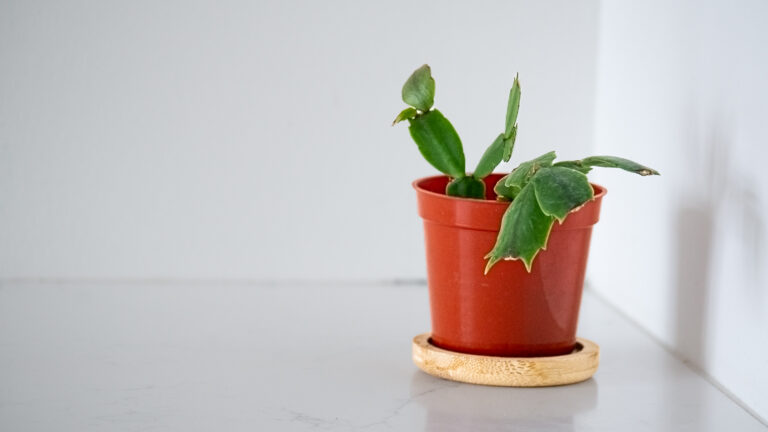Echeveria is a member of the Crassulaceae family. It is native to Mexico, Central America, and Northwestern South America.
Echeveria was named after the botanical artist, Atanasio Echeverría y Godoy in honour of his contributions to botanical art.
Many Echeverias have unique rosette forms, colouration and leaf shape. This is a diverse group of succulents within the Crassulaceae. There are 150 recognized species of echeveria, but many have been cross-bred into new cultivars so there is likely well over a thousand.
There are around 1,400 species of the Crassulaceae family.
Echeveria Appearance & Growth Habit
This Echeveria is green and grows in a compact rosette pattern. Where the leaves are attached to the stem, it can get a bit redder.
If the Echeveria does not get enough sun, it can become leggy (etiolated) very easily.
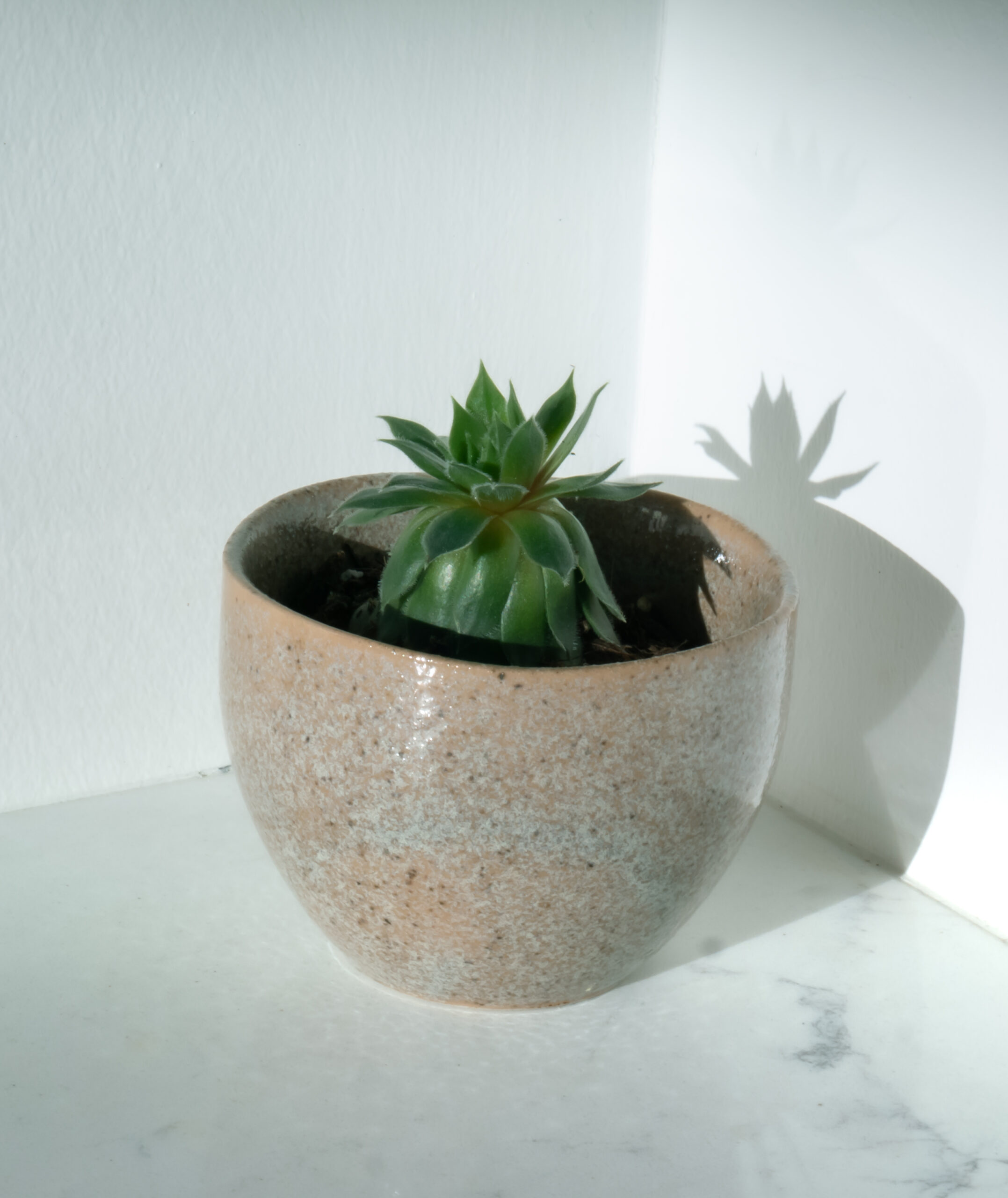
Light Requirements for Echeveria
Echeveria thrives in bright, indirect light. They prefer a south- or west- facing window. Mine is currently in a southwest facing window.
If the Echeveria is in an east facing window, it will need more sun in the day.
Ideal Temperature & Humidity for Echeveria
Echeveria prefers a temperature between 18 to 24 degrees celsius. They also prefer low to moderate humidity. Since they come from arid and semi-arid regions, they prefer drier air, but do well in average household humidity levels (40-60%).
I keep my succulents closer to the window and away from the humidifier (I use the Levoit Hybrid Ultrasonic Humidifier (LV600HH)).
I use my humidifier to ensure the humidity levels in my apartment stays between 40% and 60%. Since I live in Canada and the winters can be very dry, and the humidity can drop below 30% humidity, so its helpful to set the humidity at about 45% or 50% in this season to keep all of my plants healthy.
Growth Rate & Fertilizer Needs for Echeveria
On average, Echeveria are a low-growing plant and can grow up to 30 cm.
New foliage grows in a rosette form from a central point. The growth pattern is compact.
To encourage healthy growth, fertilize your Echeveria with a balanced succulent fertilizer once a month in spring and summer months.
How & When to Repot Echeveria
You will know it is time to repot your Echeveria if it has been 2 years since your last repot, when you notice roots growing out or circling the bottom of the pot, slowed growth, or soil that no longer drains well.
The best time to repot your Echeveria in spring or early summer (just before the active growing season). Use a slightly larger pot (2″ larger) with excellent drainage, and fresh succulent mix, and handle gently to avoid damaging the delicate roots and leaves.
Steps to Repot Echeveria
- Grab the new pot with a drainage hole, and cover the bottom with new soil. You will want to fill it with soil to a point where the Echeveria will be 1″ from the top of the pot.
- Gently remove the Echeveria from its current pot, and place it in the new pot
- Add new soil around the plant, and gently pat the soil around the succulent, ensuring it is secure
- Lightly water the Echeveria, and place it back in its well lit place in your home.
For everything you will need for repotting your Echeveria, check-out my guide on repotting essentials.
Echeveria Blooming: What to Expect
Many species of echeveria can flower (though, typically outdoors). Its flowering period is in spring and summer months.
Echeveria flowers are often stunning, arching flower stalks topped with colorful, bell-shaped blooms. While blooming is more common outdoors or in greenhouses, indoor Echeveria may also flower if given plenty of bright light and proper care.
Outdoors, the flowers attract pollinators, and adds to the striking beauty of these succulents.
How to Propagate Echeveria (Offsets & Leaf Cuttings)
The easiest way to start a new Echeveria is by cuttings.
Division
Sometimes multiple plants will be potted together. In this situations, you can remove the entire plant from the pot, gently separate the plants, and plant the individual plants into new pots. Make sure you water the newly divided plants and place them in a bright location with indirect light.
Cuttings
If the echeveria gets leggy, you can easily cut the head off along the stem. Place the stem with the head of the plant into the new soil and water. After a couple of weeks, this should be rooted. See video here for visuals.
Soil propagation
With soil propagation, you can take a cutting and put it directly in soil. You can also use rooting hormone on the cutting before putting it in the soil if you prefer. I don’t do this though. You won’t be able to see if the plant is rooting in the soil, but if the plant eventually dies, you know it didn’t root successfully. With soil propagation, you don’t have to worry about transplant shock though.
Patience is key with propagation. Give your new plant time to settle into its environment. Once you see new growth, you know your plant is well established.
Watering Echeveria: How & When
The Echeveria likes to dry out between waterings. To determine if your plant needs water, you can stick your finger in the soil (1 to 2 inches) and if it is dry, its ready for water!
If you don’t want to get your hands dirty, you can try a moisture meter (I personally have not used one, but I know quite a few people who do, and this one is really highly rated on Amazon).
This plant typically needs to be watered every 3 to 4 weeks (depending on your environment). The moist important thing is that the soil is dry before you water it.
I typically bottom water this plant through the drainage hole of the pot on a tray. It’s the easiest way to know if your plant is thirsty or not. Overwatering can lead to fungus gnats, root rot, or the death of your plant.
You can top water, but it’s best to do so in a pot with drainage until water is flowing out of the hole. If your pot doesn’t have drainage, you might accidentally drown your plant or make some fungus gnats very happy.
You should top water from time to time to make sure any built up minerals can wash through the plant. The water should drip out of the bottom of your drainage hole.
If you are going to be away for an extended period of time, and are worried about watering your Echeveria, check-out my guide on 3 ways to keep your plants alive while away.
Common Pests & Problems in Echeveria
Echeveria can face the following pests and problems.
Pests of Echeveria
Mealy Bugs
Mealy bugs look like little white cotton balls on the plant. You can remove these with your fingers if you catch them early enough, but I would use a cotton swab with a drop of Isopropyl alcohol and try to scrape them off the stem.
Scale
I’ve never personally had scale (knock on wood) and I am very thankful. Scale are small, brownish, round or oval insects that attach themselves to the leaves or stems of the plant. They are hard to notice as they appear like a growth or bump on the plant. Scale can cause yellowing, wilting, and weakened growth. Removing scale from a plant is tedious, like with mealybugs. You can remove scale by manually removing them with a cotton swab with rubbing alcohol, using insecticidal soap or neem oil.
Aphids
Aphids are small, insects that cluster under leaves and stems. They can appear white, brown, black, gray, light green or yellow. If you see distortion, wilting or yellowing leaves, this can be a sign of aphids. You should be able to spray them off with a strong stream of water or using insecticidal soap.
Spider Mites
If spider mites have taken to your plant, spray them with a mixture of neem oil, dish soap and water (or you can buy an insecticidal soap). I repeat this about once or twice a week (depending on the severity of infestation) for about a month. It’s also good to do this preventatively once a month or so. You will know you have spider mites if you see webbing and leaf damage. Learn how to eradicate Spider Mites.
Fungus gnats
Spray the plant with a mixture of neem oil, dish soap and water. I also let the soil dry out and add dryer sheets on top of the soil so the gnats can’t sense the moisture on the soil.
Other Common Problems of Echeveria
- Overwatering: Root rot happens from overwatering your plant with insufficient drainage. You can improve the drainage of your plant by ensuring your plant is potted in a planter with a drainage hole and using a well draining soil (something with a decent amount of perlite). You can also end up with fungus gnats or fungal disease from overwatering.
- Underwatering: Even though plants prefer to be underwatered over overwatered, you still have to remember to water it on a consistent schedule.
- Sunburn: Even though you will often find this plant in bright, sunny environments, they can be burned (just like humans). Their leaves can turn red, yellow, white, bleached or sometimes kind of purple. To fix sunburn in the plant you can move it to a less sunny place.
- Cold temperatures: Damage from cold temperatures can lead to vulnerability to disease, visible discolouration, growth stagnation or death. You can prevent this by making sure your plant is not exposed to environments below the recommended temperatures.
- Environmental Stress: This plant is sensitive to changes in environment. Any sort of stress and it will drop its leaves or diminish growth.
- Temperature Fluctuations: This plant prefers stable temperatures and is sensitive to cold drafts. Damage from cold temperatures can lead to vulnerability to disease, visible discolouration, growth stagnation or death. You can prevent this by making sure your plant is not exposed to environments below the recommended temperatures.
- Improper Lighting, Etiolated (leggy): Incorrect lighting can lead to a leggy plant. This happens if the plant doesn’t get enough sun. The stems will grow really long trying to reach the sun. This seems to happen to me every winter (even though its in the brightest spot in my house—which is really bright).
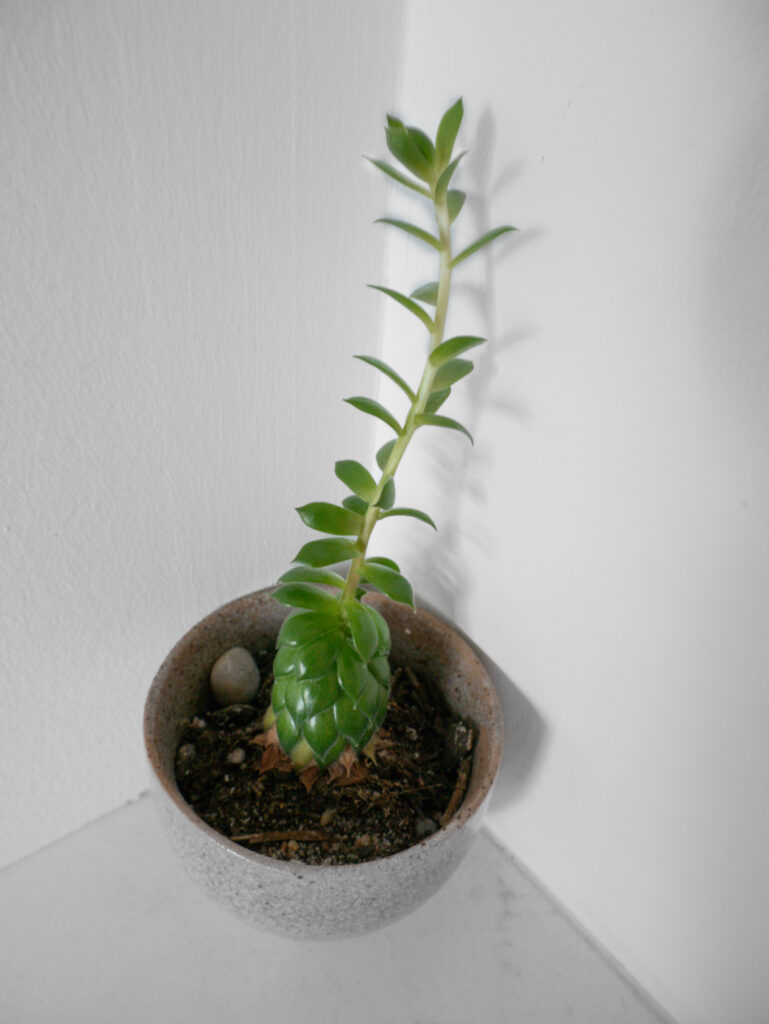
Echeveria Toxicity
Echeveria are typically not toxic to touch, however some people may experience allergic reactions.
Generally, Echeveria is considered non-toxic to both humans and pets. This makes it a safe choice for homes with curious children or pets as there are no known harmful compounds in the plant. This means any accidental contact or ingestion is unlikely to cause any issues.
However, it’s still best to discourage pets from chewing on the leaves of the Echeveria to avoid potential digestive upset.
Echeveria Quick Care Guide
| Scientific Name | Echeveria |
| Nickname | Echeveria |
| Origins | Mexico, Northwestern South America, Central America |
| Light | Bright, indirect |
| Temperature | 18 to 24 degrees celsius (preferred) |
| Humidity | Average humidity (40-60%) or Low humidity |
| Height | Up to 30 cm |
| Blooms | Yes |
| Propagate | Stem cuttings, offshoots, soil propagation |
| Water Frequency | When dry (likely once a month) |
| Pests | Mealy Bugs, Aphids, Scale, Spider Mites, Fungus gnats |
| Common Problems | Overwatering (root rot), sunburn, cold temperatures, etiolated (leggy) |
| Toxicity | Non-toxic (might not be safe when ingested) |
